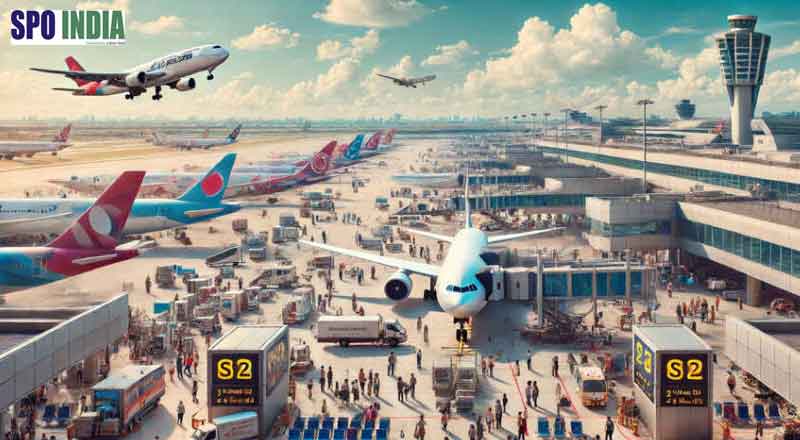- Turkish turns to partner airlines to boost India flights.
- Wizz Air aims to launch its first India flight in 2025.
- International passengers to grow to 160 million by 2030.
- Local carriers IndiGo, Air India expand with new planes.
- Aircraft lessor DAE says India demands “unlike” elsewhere.
Global airlines are actively expanding their operations in India, betting on the country to emerge as one of the most vibrant travel markets in the coming decade. At the recent International Air Transport Association (IATA) summit in Dubai, India stood out as a focal point of discussion among global airline CEOs and industry leaders, highlighting its rapid growth trajectory in both domestic and international air travel.
India’s aviation sector is on track for substantial growth, with projections indicating a doubling of domestic air passengers from a record 152 million in 2023 to 300 million. Concurrently, international passenger traffic is expected to escalate to 160 million by 2030, up from 64 million, as estimated by CAPA India, a prominent aviation research group.
Turkish Airlines, seizing on this growth potential, is evaluating new flight routes connecting its southern hub in Antalya with various Indian destinations. The airline is considering operating these routes through Sun Express, a joint venture with Lufthansa, or via its Indian codeshare partner, IndiGo. Additionally, Wizz Air, a Hungary-based budget carrier, aims to commence operations in India next year, marking its entry into this burgeoning market.
The optimistic outlook has spurred India’s largest carriers, such as budget airline IndiGo and Tata Group’s Air India, to place substantial orders for hundreds of new aircraft. These aircraft acquisitions, set to be delivered over the next decade, are expected to significantly augment India’s fleet size to over 1,500 aircraft by 2030, up from around 700 currently. Most of these acquisitions will be facilitated through sale and leaseback agreements, a financing mechanism that appeals to aircraft lessors eyeing India’s robust aviation growth.
Firoz Tarapore, CEO of Dubai Aerospace Enterprise, underscored the unprecedented growth potential of India’s aviation market, citing strong demand fundamentals and disciplined pricing dynamics that make it an attractive destination for global lessors. He emphasized that India’s strategic investments in airport infrastructure, including a planned $12 billion investment, further enhance its appeal as a pivotal player in global aviation.
Pieter Elbers, CEO of IndiGo, emphasized India’s ascendance in global aviation, highlighting its strategic importance amidst projections of exponential growth. Despite these promising developments, international airlines like Emirates and Turkish Airlines have voiced frustrations over limited market access in India. They have advocated for increased flight capacity rights, a matter that remains under consideration by Prime Minister Narendra Modi’s administration, which currently prioritizes domestic carriers.
The surge in travel demand is expected to be driven not only by India’s sizable diaspora of 35 million residing primarily in North America, Europe, and South Africa but also by a growing segment of young, affluent Indian travelers with rising disposable incomes. This demographic shift is anticipated to fuel robust growth in both domestic and international travel markets in India.
Brendan Sobie, an independent aviation analyst, drew parallels between India and China’s pre-pandemic travel surges, suggesting that India is on track to experience similar transformative growth in the decade ahead.
As global airlines position themselves to capitalize on India’s burgeoning travel market, the industry anticipates a transformative decade marked by extensive expansions, strategic partnerships, and substantial passenger growth across domestic and international sectors. The evolving dynamics in India’s aviation sector promise to redefine its role in the global travel landscape, presenting new opportunities and challenges for airlines and stakeholders alike.
(With inputs from agencies)





